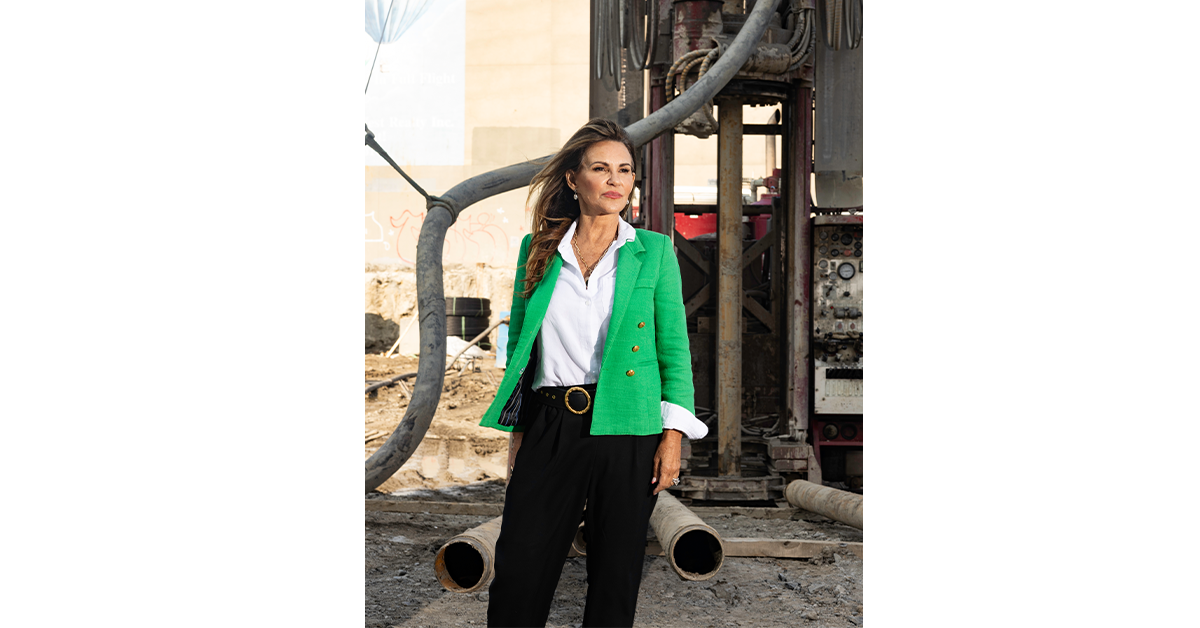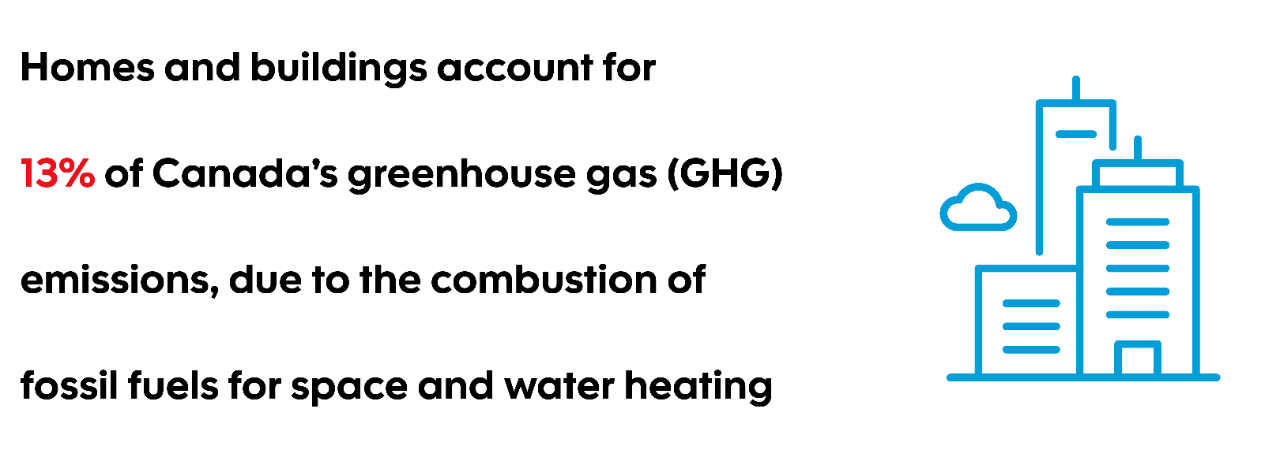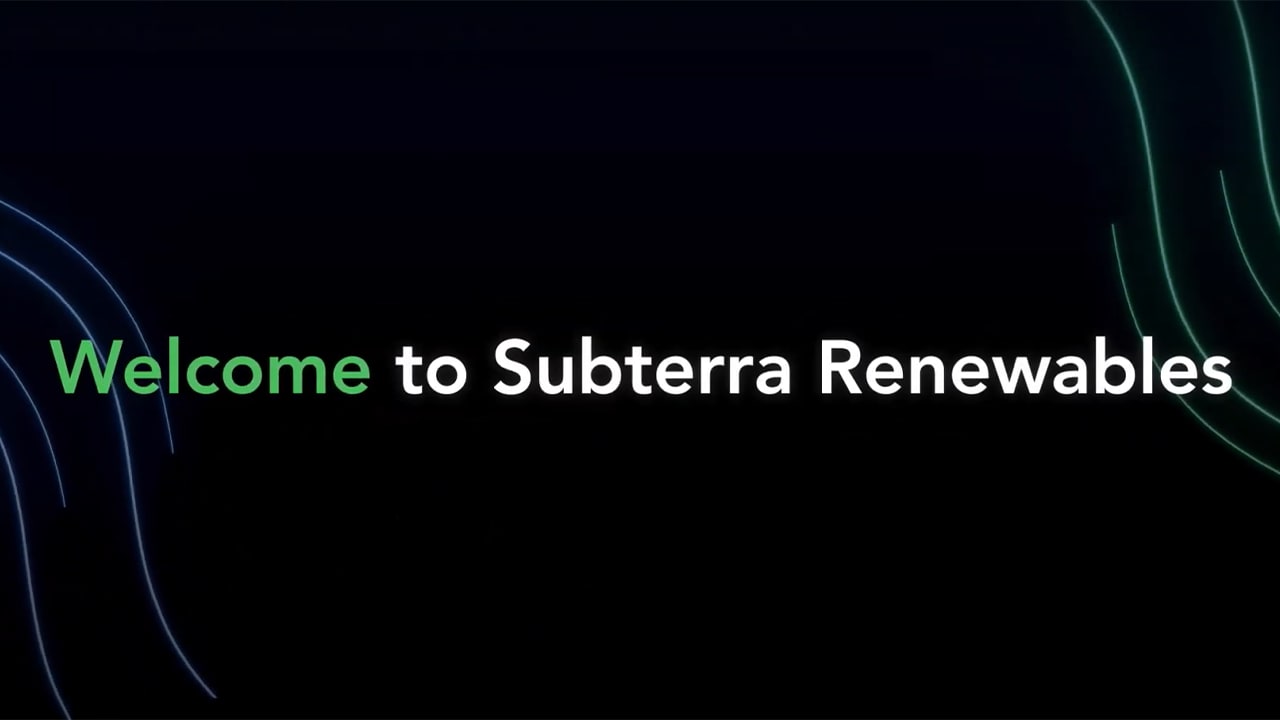Photo above: Subterra's wholly owned subsidiary, Earth Drilling and Harris Exploration, working on Oberlin College in Ohio. Credit: Subterra Renewables
This article is part of a regular series highlighting the innovative ways Scotiabank clients are doing their part to cut carbon emissions.
Subterra Renewables wants every building to use the Earth for heating and cooling by helping to remove the barriers to adopting the single-most impactful carbon-eliminating technology — the geothermal energy underground beneath our feet.
“Subterra believes the quality and performance of geothermal systems are top-notch and can be less expensive than conventional fossil-fueled HVAC,” says Lucie Andlauer, CEO of Subterra Renewables.
Using the Earth for heating and cooling, also known as geothermal exchange, is not a new approach. However, many people have the perception that installing geothermal-supplied heating and cooling is costly and technically challenging to get right.

Photo: Lucie Andlauer, CEO of Subterra, on a drilling site in downtown Toronto.
After spending much of its early years on outreach and education, Subterra is now witnessing a huge increase in demand for its renewable offering in Canada and the United States. This has much to do with efforts to reach net-zero, as well as attractive tax incentives in the United States.
“North America is embracing the benefits of geothermal heating and cooling, particularly as more data is released confirming its efficacy as a reliable method of decarbonizing buildings,” says Andlauer.
Subterra’s technology is both clean and efficient in its electricity use. The company has a large portfolio of geothermal heating and cooling projects in Canada and the U.S., ranging from individual geothermal systems for high-rise condominiums to district energy projects for universities and colleges. In every case, Subterra acts as a utility, charging its customers for heating and cooling while the company maintains the ownership and liability for the ongoing operation of its geothermal systems.
In order to get comfortable making temperature-level guarantees, Andlauer added in-house drilling and construction services to the company. Subterra now boasts a fleet of 70 drilling rigs which can be utilized in a variety of drilling conditions across the continent, and can be dispatched to any job site in 24 to 48 hours.

Source: Government of Canada
“We are the largest fleet in North America,” she says.
Last year was pivotal for Subterra.
Not only did Subterra achieve the No. 1 position in the Globe and Mail’s Report on Business ranking of Canada’s Top Growing Companies, but it also made its first U.S. entry when it began converting Ohio’s Oberlin College’s century-old fossil-fuel-powered system to a geothermal exchange system.
The idea for geothermal began two decades ago, when Andlauer installed a geothermal energy system at her 70-acre property in Burlington, Ont. She was convinced by the technology’s efficiency, reduction in carbon emissions, and improved air quality.
"We wanted to give back by reducing the carbon footprint,” she said.
Later, the company that installed the geothermal energy system in her home shut down, one of many small companies in the industry that failed. This experience inspired Andlauer and a select group of partners to launch Subterra Renewables in 2017.
Canada’s homes and buildings account for 13% of national greenhouse gas (GHG) emissions, due to the combustion of fossil fuels for space and water heating; electricity use for cooling, lighting, and appliances brings the total to 18%. In dense urban areas, such as Toronto, buildings account for at least 56% of emissions.

Source: Natural Resources Canada
“Buildings are a huge contributor to carbon emissions,” said Andlauer. “Developers can concentrate on what they do from the ground up while I concentrate on beneath the ground to use a renewable source to heat and cool homes, which removes 65% to 70% of the building’s carbon emissions.”
Geothermal exchange systems use the relatively stable temperature of the Earth’s subsurface to provide heating and cooling for buildings. In Ontario, for example, the Earth’s temperature remains constant ranging from 6 to 11 degrees Celsius in the top 650 or so feet below the surface.
Subterra’s GeoExchange system works by transferring heat energy between the building and the ground itself. By using geothermal heat pumps, energy is harnessed from beneath the ground and then channeled into the building. During winter, when outdoor air is colder than the ground, the system extracts heat from the ground to warm the building. Conversely, when outdoor air is hotter than the ground, the system transfers heat into the ground to cool the building.
Company purchased seven geothermal systems to demonstrate operations and savings
In the company’s initial three years, Subterra focused on educating developers, engineers, architects, and energy modelers on the benefits of geothermal and the risk-mitigating features of its Energy as a Service approach. It also put its money where its mouth is.
To show its clients how geothermal energy works, the company bought seven operating geothermal systems at buildings in Burlington, Oakville and Brampton. Through these acquisitions, Subterra was able to demonstrate geothermal’s resiliency, comfort, and efficacy. Subterra also uses these systems as a testing ground for updates to their technology.
"These buildings are considered geothermal pioneers in the industry, which we continue to enhance and optimize to ensure they are operating at peak performance,” Andlauer said.
Insert heading text
with an optional subtitle
While the company’s current client base includes dozens of developers across the U.S. and Canada, it was initially difficult to convince developers to abandon traditional HVAC systems in favour of geothermal.
"We went directly to the source and said, 'Listen, we understand that your home buyers won't pay extra for green features. They'd rather invest in a nice countertop. Let us come in, take away the cost objection, and make the case for green, livable buildings that utilize geothermal,'" said Andlauer.
A surge of interest in geothermal energy
Andlauer says Subterra is now seeing a surge of interest in their technology from city planners, developers, architects, engineering firms, and even investment funds.
She said the shift began during the pandemic and kept going despite higher interest rates slowing down development.
“Hundreds of retrofit projects and new builds are transitioning to geothermal from conventional fossil-fuel powered systems,” she said. “These buildings include multi-residential, low-rise, institutional, community, etc., across the continent in both Canada and the U.S.”
In the case of Oberlin, Subterra drilled around 850 wells, more than 600 feet deep, for its geothermal loops installation to help the institution's pledge for carbon neutrality by 2025.
“The U.S. is what we are super busy with right now,” said Andlauer. “We’re just starting with some new universities in the U.S. in the next two months,” she added.
'Game-changer' program
Subterra also recently announced a collaboration with Enercare Inc., one of Canada's largest home and commercial services companies.
"With the Enercare collaboration, we see this as a game-changer for developers, project owners, and consumers who, up to now, may have considered geothermal out of their price range and simply not attainable," she added.

Source: Subterra Renewables
The joint program between the two aims to reduce initial expenses for developers by having Subterra handle drilling, infrastructure installation, and utility operations, while Enercare offers rental heat-pump equipment and maintenance services, making it accessible and cost-effective for end-users.
Energy as a Service
Subterra Renewables offers a business model dubbed energy-as-a-service, meaning developers get to install the complete geothermal system at no upfront capital cost.
"We handle the groundwork like hydro companies do with wiring," she explained. "You simply pay a monthly bill for our services, comparable or lower than traditional HVAC, for a period of 25 to 50 years."
Along this journey, Scotiabank has been a great partner, said Andlauer.
“They truly care about who they’re partnering with. They’re very conscious of the type of businesses they deal with, and they have been unbelievably helpful," she said.
Related content

Sustainability Spotlight: Summit Nanotech has a plan to help fast-track the transition to EVs

Sustainability Spotlight: ‘True organic’ a way of life for founders of Field Farms Marketing

Sustainability Spotlight: Going green is an extension of good business practices at Big Marble Farms


